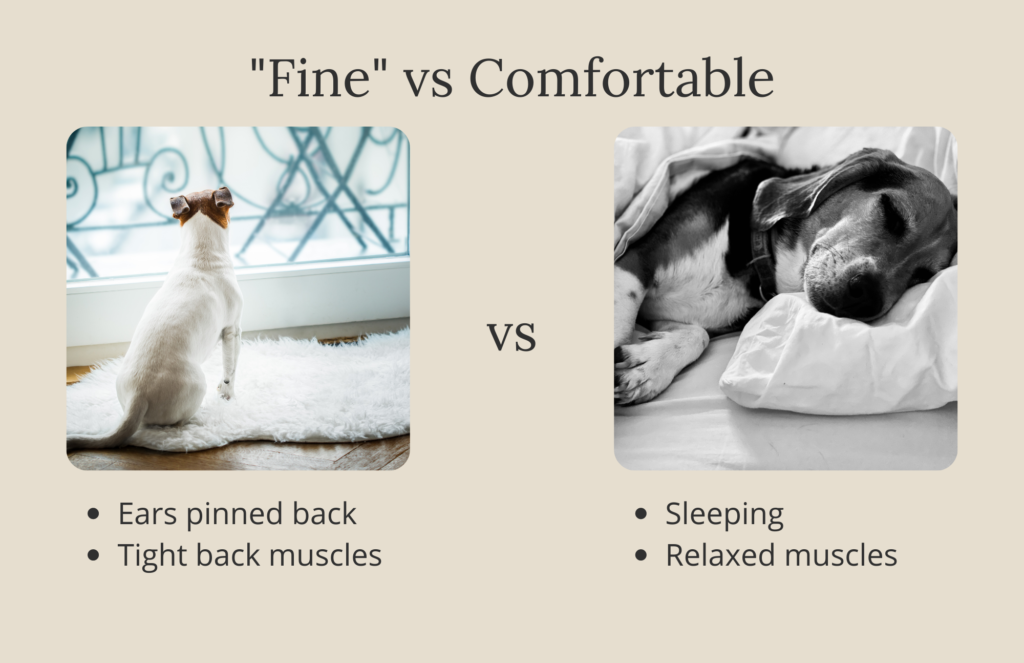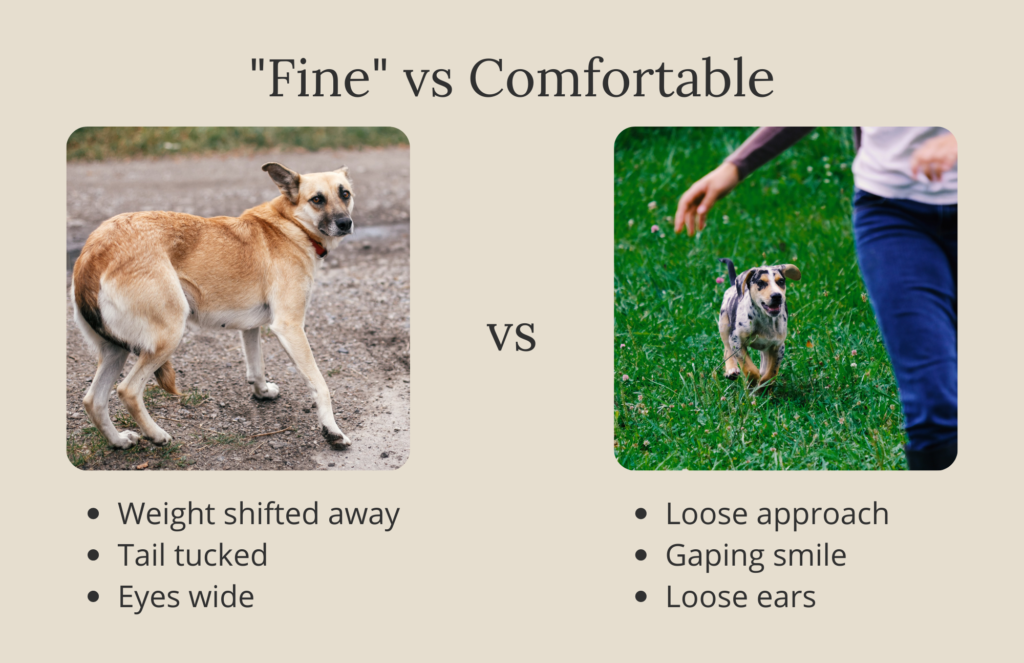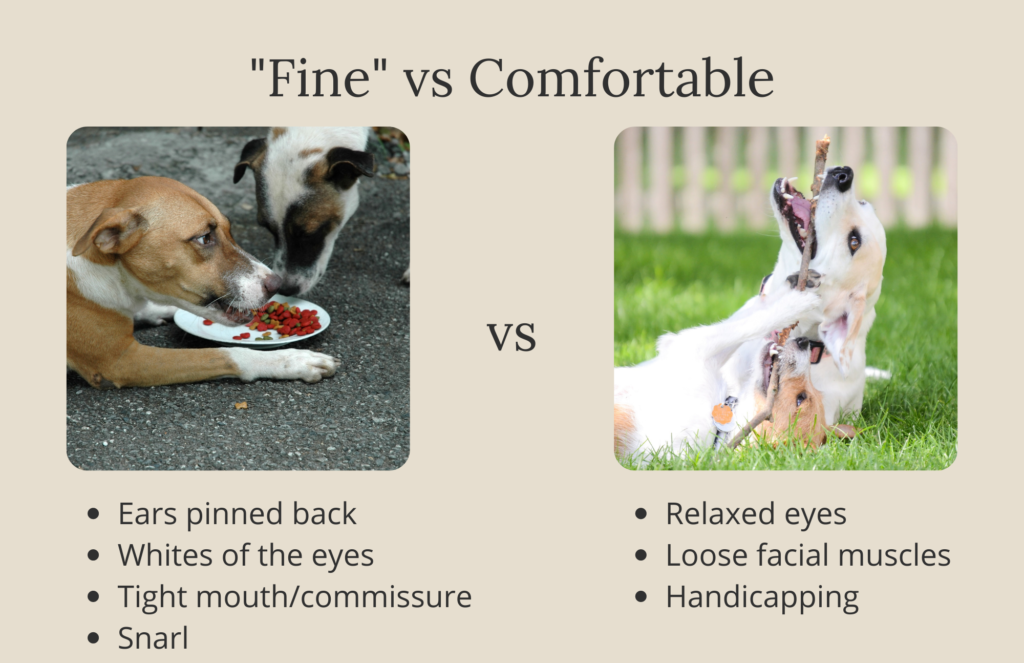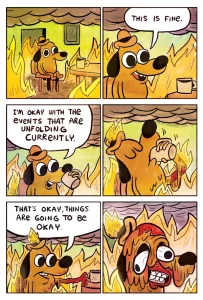If you’d prefer to listen to this blog post, click here.
Let’s chat about fine. We’ve talked about “fine” before. We are likely going to talk about “fine” again. It’s a word that gets used a lot when we are talking about our pets.
He’s fine with the vacuum.
She’s fine with me touching her feet.
They are fine with other dogs.
Usually, when I hear people using the term “fine” they really mean “keeping it together”. Sometimes “fine” is the goal. When my partner and I hunkered down at home with our pups during Irma, we were extremely satisfied with “fine”. There are going to be infrequent situations where “fine” gets us through.
However, sometimes we settle for “fine” when we should be shooting for great. And “fine” really isn’t what we want, especially in behavior modification.
“This is fine”
I think at this point we’ve all heard the pop culture usage of “fine”. There is the “This is fine” comic:
Comic created by KC Green. Find more of KC’s work here.
And to be honest, this comic applies to a lot of life. That’s one of the reasons it’s circulated on the internet for years.
There’s the discussion of “fine” in The Italian Job and that fine really means “freaking out, insecure, neurotic and emotional.”
Now, I don’t know about you, but I don’t want my dogs to be “fine”. I want them to be good. I want them to navigate the world with anticipation of good things. I want my dog to be comfortable moving through space.
“Fine” isn’t going to get your dog comfortable being alone. “Fine” isn’t going to help your dog bond with a new pet sitter. “Fine” isn’t going to teach your dog that it’s a good thing when you pick up their food bowl.
Spot the Difference
Here are some examples where “fine” really won’t cut it, and what we are looking for instead. See if you can spot the differences in the situations!




So What Do You Want?
You want comfort. You want joy. You want positive anticipation.
I want dog moms, dog dads, and dog paw-rents everywhere to say with confidence that their dog is thriving.
I know that may sound like a big ask.
It takes getting really good at reading your dog’s body language and skillfully creating an environment where your dog is comfortable. It means helping your dog to meet their needs. Both of you need some skills that will help your dog learn that scary monsters aren’t so scary (and maybe even AWESOME). And that can feel like a lot.
But the second that it’s no longer a question of “I think my dog will be okay?”
It’s a statement.
“My dog is doing great.”
Is incredibly freeing.
Now What?
- Consider the situations where you’ve been settling for fine. Are you ready to find comfort instead?
- Join us for our free upcoming webinar Living With a Behaviorally Challenging Dog: 3 Tips for Families Who Have “Never Had a Dog Like This Before”. We are going to talk about 3 tips directly from our Roadmap for Behavior Solutions that will help you and your dog navigate this world.

